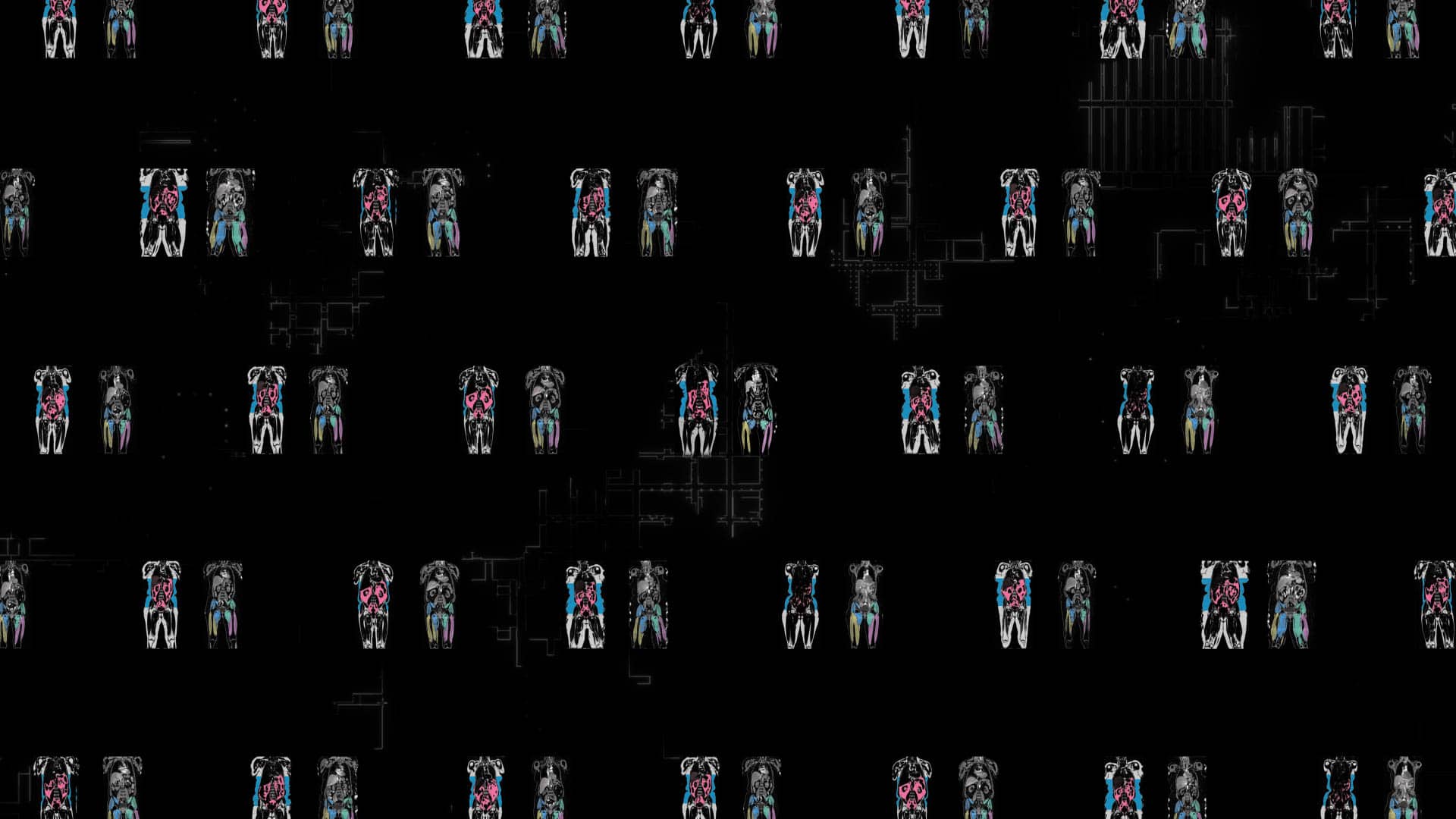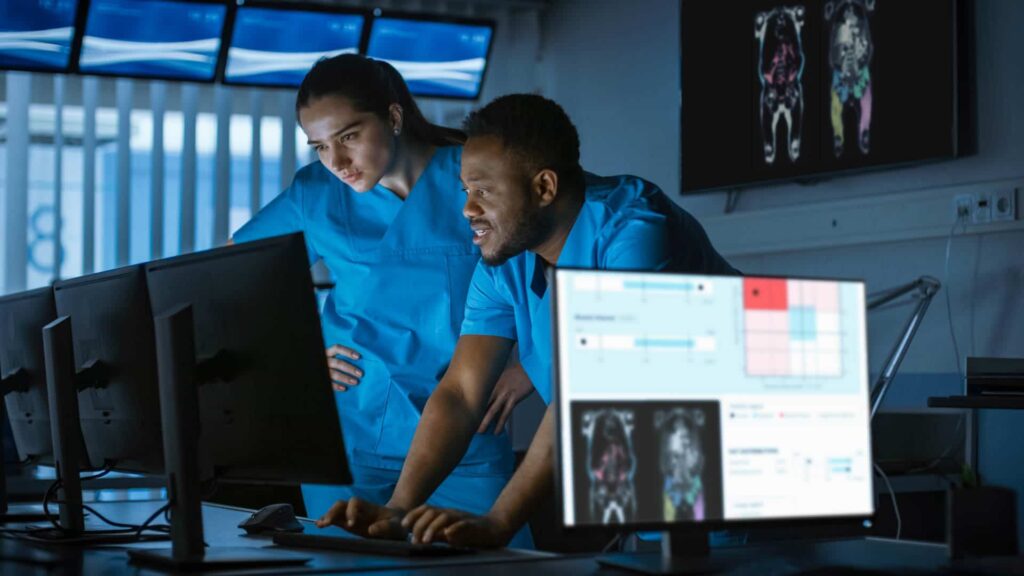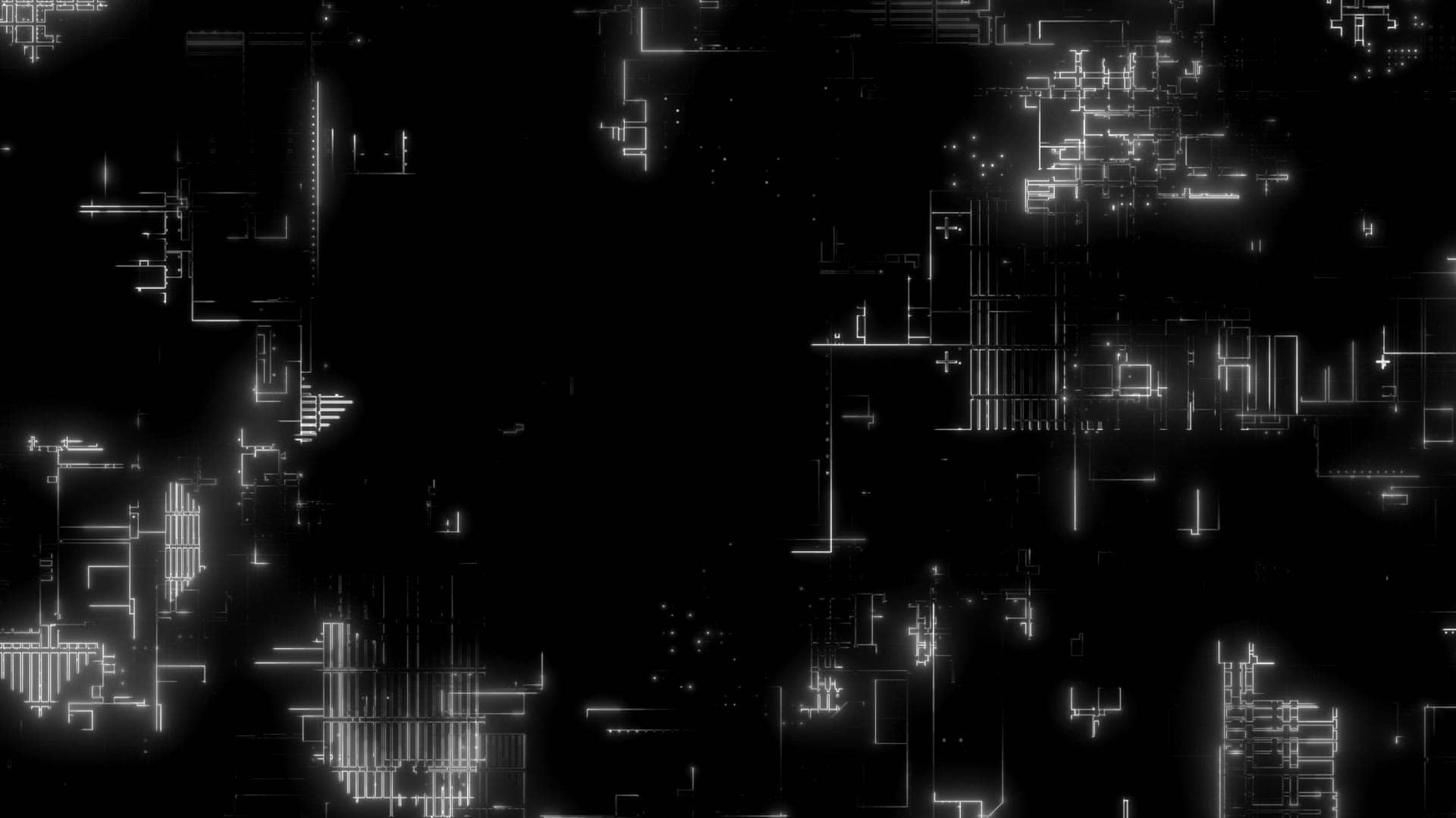
Technology
The New Standard
Since the early part of the last century, scientists have tried to determine body composition in various ways with physical principles and devices, using different anthropometric measurements and assumptions.
Today, MRI is recognized as a golden standard for body composition analysis, enabling a more complete description of a person’s body composition profile from a single examination.
Image Credit UK Biobank

At the Forefront of Medical Imaging
The precision of AMRA’s healthcare technology allows for the measure of volumetric changes, and diffuse fat infiltration into muscle, unlike other less accurate techniques such as BIA and DXA. AMRA’s service is platform-agnostic across the major 1.5 and 3T MR scanners, such that output across scanners is standardized and can be trusted.
AMRA is at the forefront of medical imaging, with the ability to measure multiple fat and muscle biomarkers providing body composition insights generated from a ground-breaking technology.
Data-driven decision making starts with tools and measurements you can trust.
Quantitative MR images using 1.5T or 3T scanner
The scanning protocol is based on symmetrical chemical shift imaging, “Two-point Dixon” imaging. After acquisition, the images will consist of fat and water image pairs, as reconstructed by the vendor-specific reconstruction software.


Automatic Calibration
Images are automatically calibrated and corrected for variations caused by inhomogeneities in magnetic field and coil sensitivity.1 The calibration uses the fat signal as an internal reference. The value of each pixel in the fat image tells the percentage of fat in that pixel. Hence, partial-volume effects do not affect the quantification, and thin layers of fat or even diffuse infiltration will contribute to fat quantification, something that is not possible for methods based on simple segmentation between fatty and non-fatty regions.


The image shows a slice in which the subcutaneous fat is displayed in blue and the visceral fat in red.

Various muscle group volumes, displayed in numerous colors to show delineation of the muscle boundaries.
Results: Classification and Quantification
AMRA has developed an automated method for the classification and quantification of fat and muscle groups.2, 3, 4 The segmentation is based on non-rigid registration between the image data volume and a library of manually segmented prototype volumes.
The body fat is divided into subcutaneous, visceral, and ectopic compartments, and each depot is given with high precision. Different muscle groups are automatically classified and the volume of each individual muscle group is obtained. Additionally, the amount of fat in any user-defined region, e.g. a muscle or an internal organ, can be calculated also for diffuse fat infiltration.
AMRA’s fat quantification method was first used in the so-called “Fast-food study.” 5, 6 AMRA’s muscle quantification method was described and evaluated in other referenced studies.7, 8

A detailed understanding of body composition is vital for identifying and tracking health, metabolic status, diseases, and overall fitness.
References
1. Olof Dahlqvist Leinhard, Andreas Johansson, Joakim Rydell, Örjan Smedby, Fredrik Nyström, Peter Lundberg, Magnus Borga. “Quantitative Abdominal Fat Estimation Using MRI”, Proceedings – International Conference on Pattern Recognition, International Conference on Pattern Recognition, 1-4, 2008.
2. Anette Karlsson, Johannes Rosander, Thobias Romu, Joakim Tallberg, Anders Grönqvist, Magnus Borga, Olof Dahlqvist Leinhard, “Automatic and Quantitative Assessment of Regional Muscle Volume by Multi-Atlas Segmentation Using Whole-Body Water–Fat MRI”, Journal of Magnetic Resonance Imaging, 41(6): 1558-1569, 2015.
3. Anette Karlsson, Johannes Rosander, Thobias Romu, Joakim Tallberg, Anders Grönqvist, Magnus Borga, Olof Dahlqvist Leinhard, “Automatic and Quantitative Assessment of Regional Muscle Volume by Multi-Atlas Segmentation Using Whole-Body Water–Fat MRI”, Journal of Magnetic Resonance Imaging, 41(6): 1558-1569, 2015.
4. Janne West, Olof Dahlqvist Leinhard, Thobias Romu, Rory Collins, Steve Garratt, Jimmy D Bell, et al. “Feasibility of MR-Based Body Composition Analysis in Large Scale Population Studies”, PLoS ONE, 11(9): e0163332. doi:10.1371/journal.pone.0163332, September 23, 2016.
5. Styrbjörn Erlingsson, Sebastian Herard, Olof Dahlqvist, Torbjörn Lindström, Toste Länne, Magnus Borga, Fredrik Nyström, “Men develop more intraabdominal obesity and signs of the metabolic syndrome after hyperalimentation than women”,METABOLISM-CLINICAL AND EXPERIMENTAL, 58(7): 995-1001, 2009.
6. Olof D. Leinhard, Andreas Johansson, Joakim Rydell, Johan Kihlberg, Örjan Smedby, Fredrik H. Nyström, Magnus Borga, “Quantification of abdominal fat accumulation during hyperalimentation using MRI”, Proceedings of the ISMRM Annual Meeting (ISMRM’09), 2009.
7. Magnus Borga, E. Louise Thomas, Thobias Romu, Johannes Rosander, Julie Fitzpatrick, Olof Dahlqvist Leinhard, Jimmy D Bell, “Validation of a Fast Method for Quantification of Intra-abdominal and Subcutaneous Adipose Tissue for Large Scale Human Studies”, NMR in Biomedicine, 28(12): 1599-1787, December 2015.
8. Michael S. Middleton, William Haufe, Jonathan Hooker, Magnus Borga, Olof Dahlqvist Leinhard, Thobias Romu, Patrik Tunón, Gavin Hamilton, Tanya Wolfson, Anthony Gamst, Rohin Loomba, Claue B Sirlin. “Quantifying Abdominal Adipose Tissue and Thigh Muscle Volume and Hepatic Proton Density Fat Fraction: Repeatability and Accuracy of an MR Imaging-based, Semiautomated Analysis Method”, Radiology, 2017 May;283(2):438-449. doi: 10.1148/radiol.2017160606, (Epub ahead of print), 2017 Mar 9.

Let’s talk
Tell us how you are using MRI for body composition analysis and let’s power the future of medicine together.
This site is protected by reCAPTCHA and the Google Privacy Policy and Terms of Service apply.